Hot List
Best Drivers: Look / Sound / Feel
The best clubs in each category of the Hot List reflect excellence in an array of criteria, as judged by our player testing. For drivers, that includes look, sound and feel. Although sound is often equated to feel, our 32 panelists know that what they hear isn’t always representative of the feedback they receive. They also know what they prefer to see at address. These individual lists provide a way to identify the look, sound and feel within the category. Here you’ll see how 32 players evaluated specific drivers, based on each player's interpretation of the criterion of Look/Sound/Feel, with each achieving a minimum of 4.5 stars from our players in that area.

The largest chunk of the golfing population should fit into this model. It has the most stable head in the family for extra forgiveness on mis-hits across the face, and Callaway has added a rear perimeter sliding weight to more tightly fine-tune mis-hits and swing patterns. Expect a mid-range ball flight compared to the other models in this family, and the ideal target player is a swing speed from 90 to 100 miles per hour.
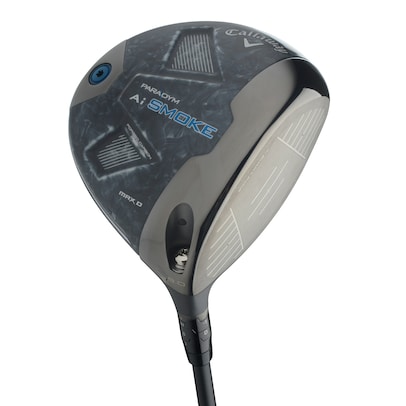
With the most expansive clubhead in the family and featuring the largest face area, this model is intended to help inconsistent ball-strikers. The head has a built-in anti-slice bias (Callaway estimates 10 more yards of draw compared to last year’s Paradym X), and the fixed rear weight is lower than past models for extra stability and the highest launch in the family. The golfer with a swing speed from 80 to 95 miles per hour and a swing path that features a steeper downswing that cuts across the ball will benefit the most from this model.

Built on a similar platform as the Max D, this model uses a lighter overall weight (about a golf ball less than the standard models) to help moderate-swing-speed golfers maximize their potential. The broad, forgiving face with its AI-designed multilevel thicknesses and a lightweight body (made of carbon fiber from top to bottom) boost forgiveness, and a low weight in the back helps shots launch higher. A cushioned but airy Winn grip (half the weight of the standard) adds a measure of control, as does a super-light 40-gram shaft.

The lowest spinning model in the family was developed with the help of data from elite golfers and tour players. It uses a distinct multi-thickness face, designed through the use of artificial intelligence, that focuses on enhancing performance on center hits. Slightly heavier than the standard models, it aims to produce a neutral ball flight. The largely carbon-composite crown and sole save weight to make room for interchangeable weights in the front and rear of the sole. Callaway says this version improves downrange dispersion over last year’s Paradym TD by 34 percent.
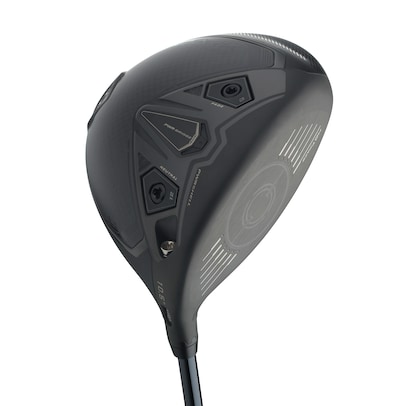
The problem with focusing on aerodynamics is that it helps players with the fastest swing speeds the most and is harder to achieve forgiveness for slower swingers. That’s why the design here is so smart—building in speed enhancements like a soft leading edge, reduced profile, higher crown peak and a taller trailing edge for high-swing-speed players. Those golfers also benefit from a low, forward center of gravity through three adjustable sole weights and internal weight bridge that sits lower and more forward than in past versions.

Distance and direction are the distinguishing characteristics of this design in the Darkspeed family. The Max is made for players looking to make the most of their poorer strikes and limit how wild their slice might be. Through larger regions of carbon composite than before in the crown and sole, this driver redistributes extra mass to the deep center and the heel side of the sole. Positioning the heavier 12-gram weight in the rear boosts forgiveness, and shifting it to the heel generates more slice correction. In either position, the internal weighting stays low and back for naturally higher launch with a draw bias.

Designed to offer lower spin and forgiveness on off-center hits, this model balances front and rear weighting to appeal to a range of swing speeds. The front and back adjustable three- and 12-gram sole weights tweak spin and launch. A 13-percent larger face area extends the most flexible sections to the outer edges, and an internal bridge-like weight bar is now more forward and lower than before without touching the sole or face. This means better all-around distance potential through lower spin and more direct energy transfer.

This low-spin head has two seven-gram weights that can slide in two heel and toe channels in the sole. The angled channels converge at the rear center of the sole and allow for an infinite range of heel- or toe-biased weighting. The channel cut into the front of the sole maximizes the way the face flexes. Also helping is a new titanium alloy that makes the face lighter, faster and stronger. The weight-saving carbon-composite crown and a steel bar in the channel’s polymer filling help to lower the center of gravity.

Instead of trying to be multiple things at the same time, this ultra-oversized entry in the ST driver family focuses almost exclusively on forgiveness. Rather than selectively saving weight in a relatively contained head size, this head stretches to the size limits of the rules, replacing titanium with lightweight carbon composite on the crown and sole. Mizuno designers then jammed as much leftover mass as deep in the head as possible. The goal is extreme stability, and this head features the highest moment-of-inertia measurement (for its resistance to twisting on off-center hits) of any Mizuno driver ever.

Somewhat the fraternal twin of the ST-Z 230, the ST-X 230 shifts the weight saved from its carbon-composite crown and sole slightly toward the heel. While for some, that 14-gram back weight offers a bit of slice correction, its main function is to make the overall head easier to manipulate during the swing. That means it can appeal to players looking to work the ball. Still, its relatively deep position in the head improves overall stability on off-center hits. Just as important to ball speed are the high-strength titanium alloy in the face and a channel cut in the sole to improve the way the face deflects, particularly on lower impacts.

This clubhead features a more neutral but forgiving launch that benefits from a high-strength titanium alloy in the face for extra ball speed. The forgiveness comes from a 14-gram weight placed deep in the center that makes the head extra stable on off-center hits. Additional speed comes from the channel cut into the front part of the sole, which allows the face to flex more at impact, especially low on the face. A steel weight in the polymer filling helps lower the center of gravity to reduce spin.

The more compact size (440 cubic centimeters) and slightly more forward center of gravity should resonate with high-swing-speed players who are seeking extra control and low spin. A carbon-composite section in the back half of the crown helps to lower the CG. It also wraps around the perimeter to save weight. The lowest launching model in the G430 family uses a face design that’s thinner to provide additional ball speed. The face also curves less at the bottom so that those low-face impacts launch with more energy and less spin.

Before the introduction of Max 10K, this was the most stable head in the Ping lineup. Its difference lies in mixing that stability with a 25-gram movable-weight system to set ball flight at neutral, fade or draw. Aerodynamic ridges at the front of the crown (“turbulators”) help this big head glide through the air, and a thinner face adds energy. At the same time, less face curvature means low impacts launch with less spin for more distance.

In a family of wide-body, ultra-forgiving drivers, the Max 10K is the beefiest, nearly filling the size and shape limitations set forth in the rules. That size, along with a heavy and fixed tungsten weight in the back of this massive head, pushes stability on off-center hits to the highest in company history and the edge of golf’s rules. Those limits regulate how stable a head is from heel to toe, but this driver goes another step by stabilizing how the head resolves mis-hits high and low. A carbon-composite crown section keeps the center of gravity low to control spin, too.

For the first time, this slice-fighting driver in the Ping lineup adds a movable weight. The thinking is that having two slightly draw-biased positions in the rear perimeter for the 22-gram weight lets this head attack 2 degrees of slice while still maintaining plenty of off-center-hit stability. Ping’s team reports the near position brings you 13 yards closer to the fairway, and the more aggressive position cuts 20 yards off that mis-hit. It’s got the same enhanced face design as the other models, and its slightly lighter overall club weight should help generate height and distance.

The standard model—the most forgiving of the two—features more stability on off-center hits from heel to toe (by a little) and top to bottom (by 25 percent). This means some off-center hits have ball speeds consistent with center hits. The way the new titanium alloy in the face deflects at impact yields higher flight with less spin. Meanwhile, the lightweight carbon-composite sections on the crown and sole result in a lower and deeper center of gravity compared to last year’s extra-forgiving XF model.

This sleeker overall shape mixes forgiveness with an extra emphasis on low spin. Although the standard model spreads its adjustable weights to the extreme perimeter, this tour-level version shifts the heel and toe weights to a more forward position in the sole. Supported by lightweight carbon-composite panels on the crown and sole, a centered rear weight still adds forgiveness for mis-hits, and both the back weight and the forward sole weights sit at the level of the sole to lower the center of gravity for less spin. The new titanium alloy in the face produces higher launch and further reduces spin.
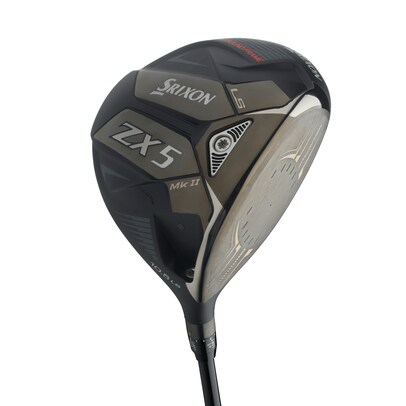
This model combines the large, confidence-inspiring shape of the standard ZX5 with the low-forward center of gravity seen on the ZX7. An eight-gram weight positioned forward in the sole helps to make this the lowest spinning of the three models. Its neutral ball flight and mid- to high-launch angle caters to more aggressive swingers looking to max out distance. With the weight forward in the sole, expect a little less forgiveness on off-center hits compared to the standard ZX5 but somewhat more than the ZX7.

A larger looking profile with more of a flattened crown sets the tone for the most forgiving of the three models in this family. It should produce the highest launch of the three with a natural-draw weighting that works gently to mitigate your slice. This also makes it ideal for most average golfers who are looking for the best performance on off-center hits. The adjustable rear-sole weight lets your clubfitter dial in your ideal swing weight, especially helpful for those who want to play this driver at a slightly shorter length than the standard 45¼ inches.
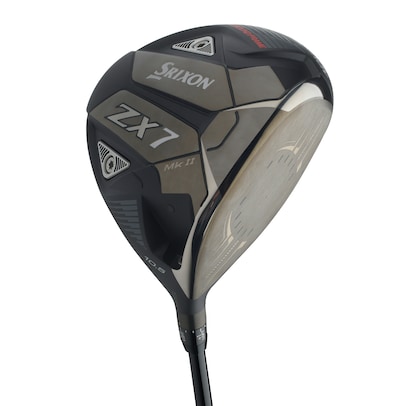
A compact shape with a taller face, this model is built for high-speed, high-skill players who like to maneuver their tee shots. Generally, you’ll see the lowest launch of the three models here with more of a neutral to fade-biased ball flight. Further adding to its emphasis on control are the interchangeable weights in the heel and toe of the sole (one at eight grams and the other at four). They let a player shift the center of gravity in the head to favor more of a draw or a fade.
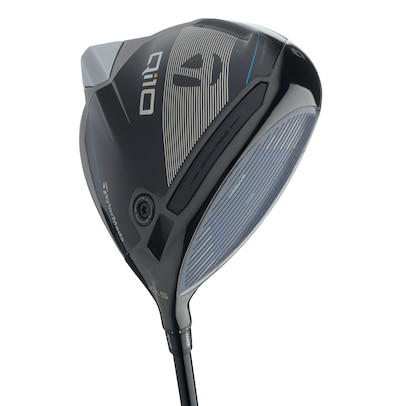
Among the improvements here—beyond better overall stability on mis-hits on the heel and toe and high and low—is the increased use of carbon composite in the crown. Now stretching almost seamlessly to the top of the face, the crown saves weight to help increase stability on off-center hits and to lower the center of gravity for reduced spin and better energy transfer. The structure of the channel in the sole now gives more at impact to deliver extra flex to the face for faster ball speed, particularly on lower hits on the face.

The most compact of the three clubheads, the LS is designed for better players who like to work the ball and desire less spin. Noticeably sleeker is the sliding-weight track on the sole, which is positioned more forward and lower this year for increased effectiveness on trajectory and spin. It also weighs nearly six grams less. This weight savings along with the savings from the carbon face and body construction can be repositioned in the form of 19 grams in the rear perimeter for extra stability.

Easily the most extreme step in size and shape of the three models, the Qi10 Max is not only longer front to back but incorporates a heel-biased shape. That weighting helps to make the larger head easier to square and still provides the highest stability in company history on misses in the heel and toe as well as high and low. The ultra-oversize design controls distance-robbing high spin through its extensive use of carbon composite in the face and body, including stretching the crown piece to meet the top of the face.

Call this the Titleist driver for those who don't think they swing fast enough for a Titleist driver. This lightweight model has been used by top LPGA Tour players, and its overall technology package brings ball speed, forgiveness, plus the potential for faster swing speeds and a draw-biased ball flight. It might not directly say so in all the marketing materials, but this model in the TSR family could fit more average golfers than the other models combined. Check your ego at the door and give it a serious look. You might not recognize all that newfound speed.

This is Titleist’s most forgiving and welcoming shape. It features a larger face area and most importantly a unique face-thickness pattern that emphasizes performance on mis-hits. All that is enhanced by the overall larger footprint that makes for the most stable head in the line. The sleeker external lines and curves make that larger shape sail through the air a bit smoother to let players generate more clubhead speed.

This is Titleist’s most popular model on tour. It's designed for players who have a consistent impact pattern around the center of the face. As a result, the face features a special variable-thickness pattern that emphasizes the best performance for center strikes. The TSR3 has a more compact size, but it also adds a movable weight that allows players to shift the center of gravity slightly. Yes, this helps somewhat with draw or fade preferences, but mostly it’s designed for lining up the CG with where a player is making impact. The result is better energy transfer.

This is the big brute of the Titleist line, targeting fast-swinging elite players who are looking for a lower-spinning driver at all costs. The playability has been improved from past versions by changing the face design. Its variable-thickness pattern is designed much like that of the TSR2’s face with the result being a little more forgiveness on off-center hits. Though low-spin is its hallmark, the two sole weights (one heavier, one lighter) can be flipped around to dial in the ideal spin reduction you need.